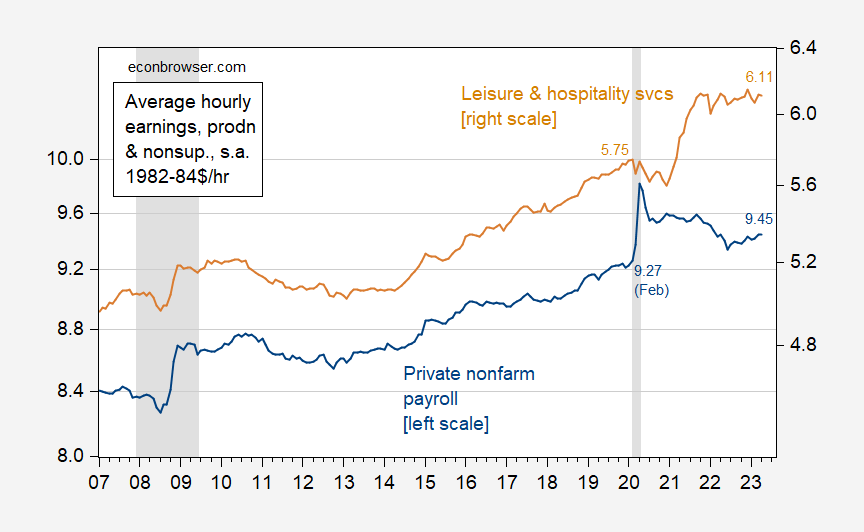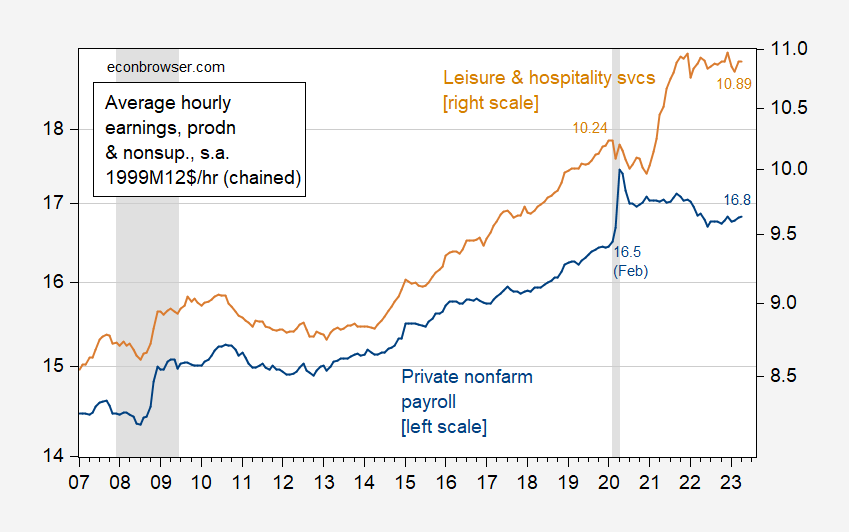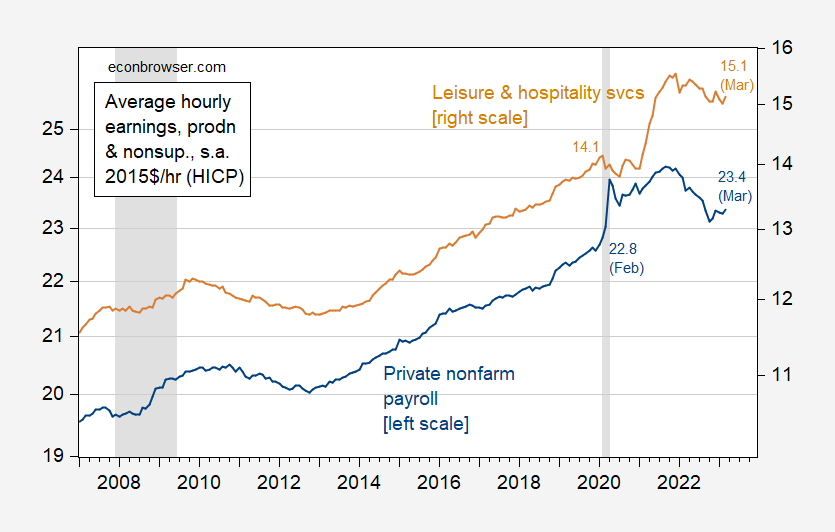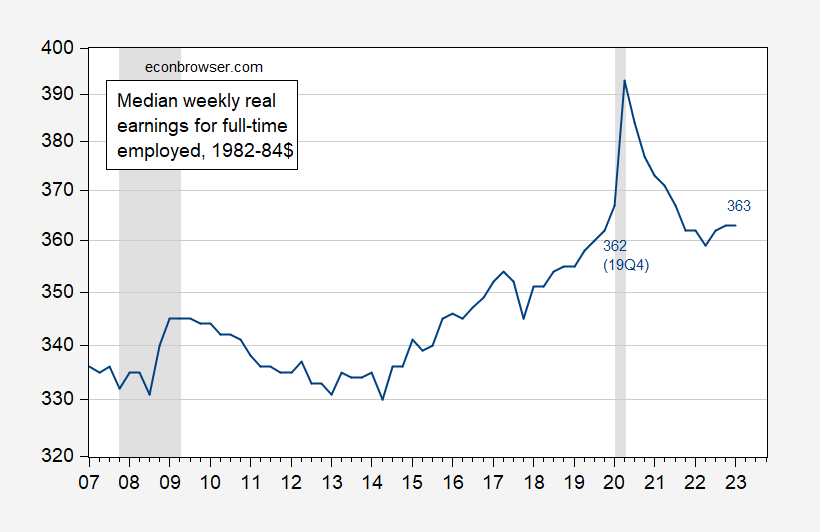Real Wages, 2007-2023M04
Higher than at the previous NBER peak (2020M02):

Figure 1: Average hourly earnings in total private nonfarm payroll (blue, left log scale), and in leisure and hospitality services (tan, right log scale), for production and nonsupervisory workers, in 1982-84$. NBER defined peak-to-trough recession dates shaded gray. Source: BLS via FRED, NBER, and author’s calculations.
As is well known, the CPI is upwardly biased (for a number of reasons, including it being a Laspeyres index, albeit less so over time). I show the Chained CPI version of Figure 1 below (where I’ve seasonally adjusted the log series using X13).

Figure 2: Average hourly earnings in total private nonfarm payroll (blue, left log scale), and in leisure and hospitality services (tan, right log scale), for production and nonsupervisory workers, in 1999M12$. NBER defined peak-to-trough recession dates shaded gray. Chained CPI seasonally adjusted by author using X13. Source: BLS via FRED, NBER, and author’s calculations.
Finally, consider the HICP deflated real wages. The HICP includes rural weights in the calculation of the price index. In addition, it does not incorporate an equivalent of the “Owner Equivalent Rent” component.

Figure 3: Average hourly earnings in total private nonfarm payroll (blue, left log scale), and in leisure and hospitality services (tan, right log scale), for production and nonsupervisory workers, in 2015$. NBER defined peak-to-trough recession dates shaded gray. Chained CPI seasonally adjusted by author using X13. Source: BLS via FRED, NBER, and author’s calculations.
Finally, what are the median usual real weekly earnings for full-time workers, as derived from the Current Population Survey?

Figure 4: Median usual weekly earnings for full time wage and salary workers, in 1982-84$ (blue, on log scale). NBER defined peak-to-trough recession dates. Source: BLS via FRED, NBER.
As of 2023Q1, they are about even with the level at the previous NBER peak of 2019Q4. Note that when looking at the entire sample of workers, compositional effects are such that earnings of those employed typically rise during recessions.
More By This Author:
Term Spreads And Break-Evens
CDS Spreads On One Year Treasuries
Business Cycle Indicators, Incorporating The Employment Release



